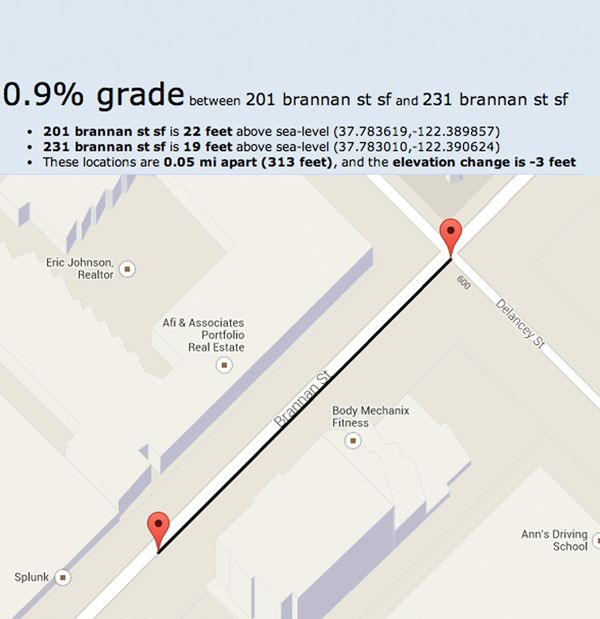Hello Parking Guru,
I just got a copy of your book, and was ecstatic to have found that such a thing exists; however, my reason for finding it is less than desirable. I recently got tagged for not curbing my wheels on a grade, on a street where I have never been cited for this, Brannan at Delancey.
I quickly found your information about the survey grades from SFDPW, and the map for it. Here is what I am wondering: The law says that it is a violation if wheels are not parked on greater than a 3% grade. The grade of my street according to SFDPW is 3.03%, technically greater than the threshold but by such an insignificant amount as to make little to no difference.
Furthermore, I was parked closer to Delancey, which appears from my visual observation as less steep than the section further up the street. Is there some way I can technically convey this to the SFMTA and contest this?
Thanks for the advice in advance, and thanks for all of your information.
Sincerely,
B.P.
Dear B.P.,
Thanks for the kind words. Glad you find the info useful. Now to your situation. I think arguing that the 3/100 of a percent grade should be rounded down to 3% will prove futile as it is still 3%. However, your situation piqued my curiosity and I have uncovered something quite amazing that will not only help you, but will require SFMTA to reconsider how it gives out parking on grade citations. And as a bonus, this discovery is an incredibly accurate custom elevation route design tool for bicyclists, which was the programmer’s original purpose.
It is a tool called VeloRoutes. It was created by Matt Mikul of Seattle who has a passion for both bicycling and programming. He created this tool by mashing up elevation data from the United States Geological Survey, topographical data from terraserver, Doppler radar mapping from the Iowa State University Environmental Mesonet, all wrapped in layers of mapping from earthtools, and googlemaps api.
Here is how you can use this to contest your ticket. The official street elevation survey conducted by SFDPW, which is what is used to cite people for violations, was conducted in the PG era (Pre-Google).
And I think pre-spaceflight as well. I believe that it was even drawn by hand. On paper.With ink. While perhaps fairly accurate in measuring an average grade for the entire street, it does not account for the fact that streets aren’t perfectly and evenly sloped. There are peaks and valleys in a length of a block.
This tool allows one to know the precise grade of a specific section of a street. I entered in the section of the street where your citation was issued, and discovered that your visual observations were correct. That specific section of Brannan is in fact 0.9% grade.
Send in this picture, let them know that the sources of the information came from data that is more precise than the survey that they rely on. I would expect a standard rejection letter initially. Once you receive that, go to the SFMTA office for a walk-in hearing with an administrator (if you go in the morning, you can be in and out in 15 minutes). The administrator will in listen to you and consider the facts, and most likely dismiss your ticket. She will then probably call her supervisor and let them know that, “..the old road is rapidly aging, and the times they are a changing”.
David LaBua is a leader in the sustainable urban mobility movement, author of Finding the Sweet Spot,and founder of VoicePark,the world’s first voice-guided mobile app that guides drivers to the closest available parking spot in real-time. You can follow him on twitter@ParkingGuru.
Related Articles
